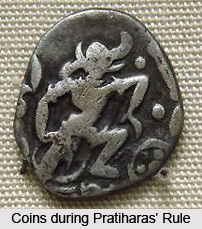 King occupied the highest position in the state and had enormous powers, kings adopted big titles such as `Parmeshwara`, `Maharajadhiraja`, `Parambhaterak`. The appointment of the samantas and singing on giants and charities were also the works of the kings. The samantas used to give military help to their Kinsis and fought for them the advice of the high officers was taken in matters of administration. However, there is no reference of mantriparishad or ministers in the inscriptions of that period.
King occupied the highest position in the state and had enormous powers, kings adopted big titles such as `Parmeshwara`, `Maharajadhiraja`, `Parambhaterak`. The appointment of the samantas and singing on giants and charities were also the works of the kings. The samantas used to give military help to their Kinsis and fought for them the advice of the high officers was taken in matters of administration. However, there is no reference of mantriparishad or ministers in the inscriptions of that period.
Following were the eight types of different officers in the administration of the Pratiharas
• Kottapala: He was the highest officer of the fort.
• Tantrapala: He was the representative of the king in samanta states.
• Dandapashika: He was highest officer of the police.
• Dandanayaka: The duty of dandanayaka was to look after the military and justice department.
• Dutaka: The duty of the dutaka was to carry order and grants o" the king to specified persons.
• Bhangika: He was the officer who wrote order of charities and grants.
• Vynaharina: He was probably some legal expert and used to provide legal advice.
• Baladhikrat: This officer has been usually referred as senapati by historians.
The entire state was divided into many bhuktis. There were many mandals in each bhukti and each mandala had several cities and many villages as well. Thus the Pratiharas had organized their empire into different units for administrative convenience. The samantas were called Maha samantahipati or Maha Pratihara.
The villages were locally administered. The elders of the villages were called Mahattar who looked after the administration of the village. Gramapati was an officer of the state who advised in matters of village administration.
The administration of the city was looked after by councils which are referred as Goshthi, Panchakula, Sanviyaka and Uttar sobha in the inscriptions of the Pratiharas.
Thus the administration of the Pratiharas was quite efficient. It was on account of the efficient administration that the Pratiharas were able to defend India from the attacks of the Arabs.
This article is a stub. You can enrich by adding more information to it. Send your Write Up to content@indianetzone.com






































